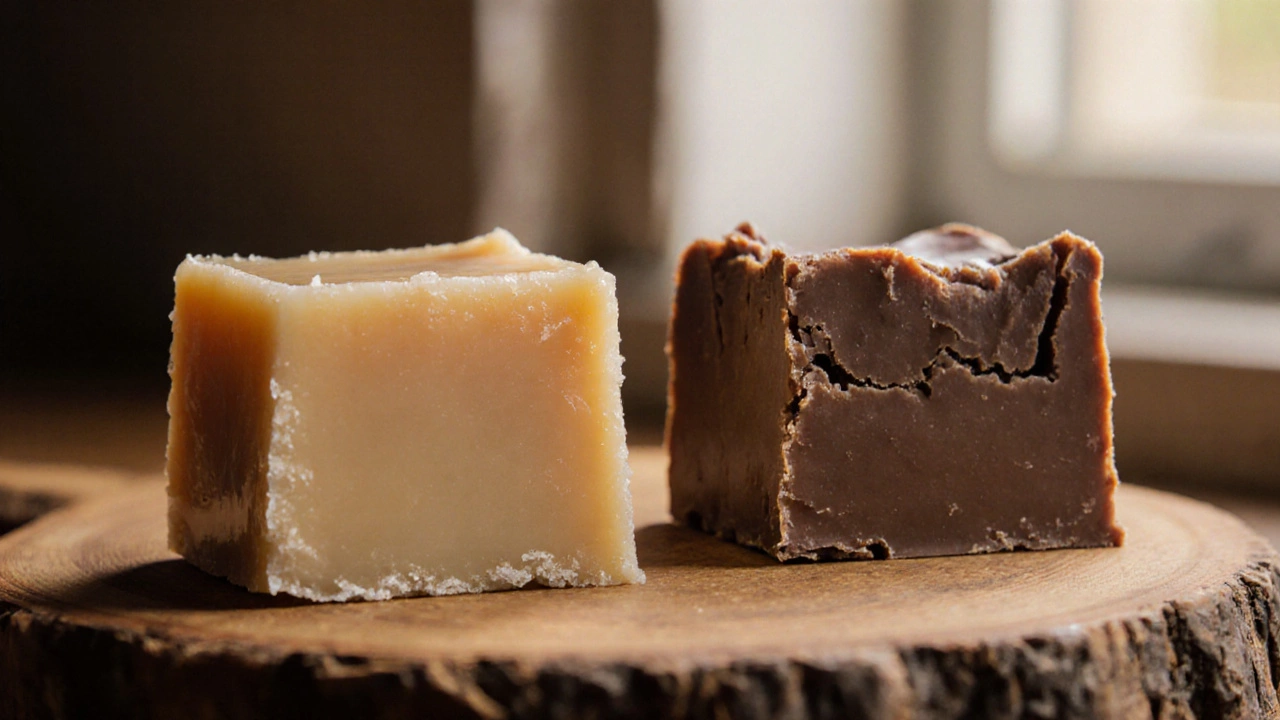
Why Is My Fudge Chewy? Common Causes and How to Fix It
Learn why fudge can turn chewy and how to fix it with clear steps, temperature charts, and troubleshooting tips for perfect smooth fudge every time.
When working with soft fudge, a pliable, melt‑in‑your‑mouth version of classic fudge that stays tender for days. Also known as chewy fudge, it depends on the right balance of sugar, butter, and milk, plus precise temperature control. soft fudge often trips bakers because fudge hardening occurs when the sugar crystals grow too large during cooling, turning a silky bite into a brittle slab. How you store it matters too; fudge storage, the method you use to keep fudge fresh in the fridge, pantry, or airtight container can slow or speed up that hardening process. Finally, fudge texture, the mouthfeel ranging from smooth and creamy to gritty, is the end result of how you handle temperature, ingredients, and storage. In short, soft fudge encompasses fudge texture, requires proper temperature control, and is influenced by how you store it.
First, the cooking temperature sets the stage. Using a candy thermometer, bring your mixture to the "soft‑ball" stage (around 235‑240°F/113‑115°C). Anything lower leaves too much moisture, causing soggy fudge; any higher pushes the sugar into the "hard‑ball" range, making the final product firm and prone to hardening. Second, the ingredient ratios matter. A classic recipe mixes equal parts sugar and butter with a splash of milk; adding a pinch of corn syrup or a dab of cream cheese can prevent large sugar crystals from forming, protecting that creamy texture. Third, cooling technique is the hidden hero. Let the fudge sit at room temperature just long enough to set, then cut it into squares and wrap each piece tightly in parchment before refrigerating. This layered approach keeps the surface dry while the interior stays moist, extending the soft‑fudge window by several days.
Storage habits seal the deal. Keep fudge in an airtight container, and if the kitchen is warm, stash the container in the fridge. However, avoid direct contact with cold surfaces; a thin wax paper barrier stops condensation from making the outer layer gritty. For longer keeping, you can freeze fudge for up to three months—just thaw it slowly in the fridge to prevent condensation. Remember, the longer the fudge sits, the more likely it is to lose that soft bite, so plan to serve it within a week for peak enjoyment.
Below you’ll find a curated set of articles that dive deeper into each of these points. From a step‑by‑step guide on preventing fudge from hardening to storage FAQs and tricks for achieving the perfect texture, the collection covers everything you need to turn a simple batch of fudge into a lasting, melt‑in‑your‑mouth treat. Keep reading to discover practical tips, common mistakes to avoid, and expert advice that will keep your fudge soft, creamy, and ready for any occasion.

Learn why fudge can turn chewy and how to fix it with clear steps, temperature charts, and troubleshooting tips for perfect smooth fudge every time.